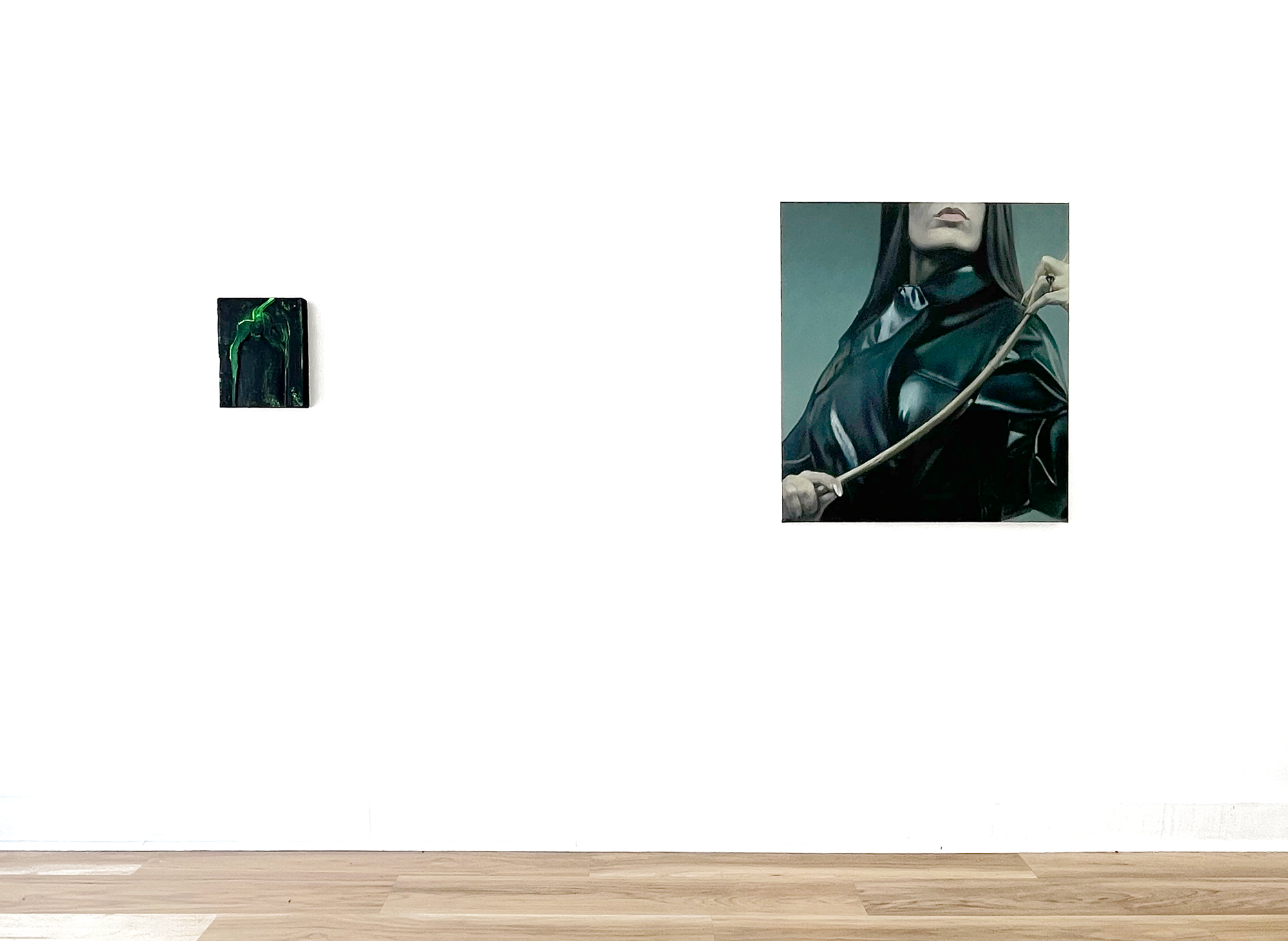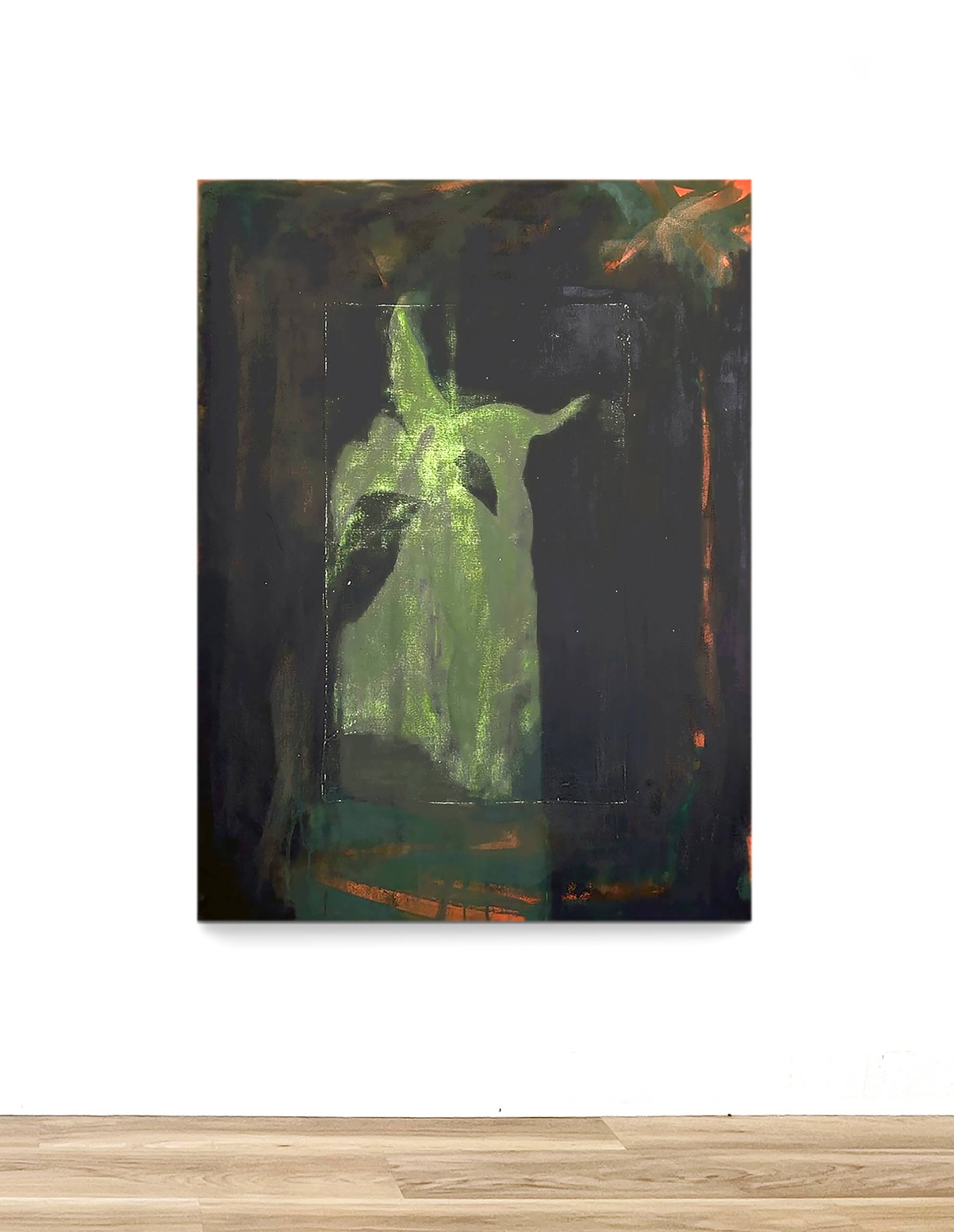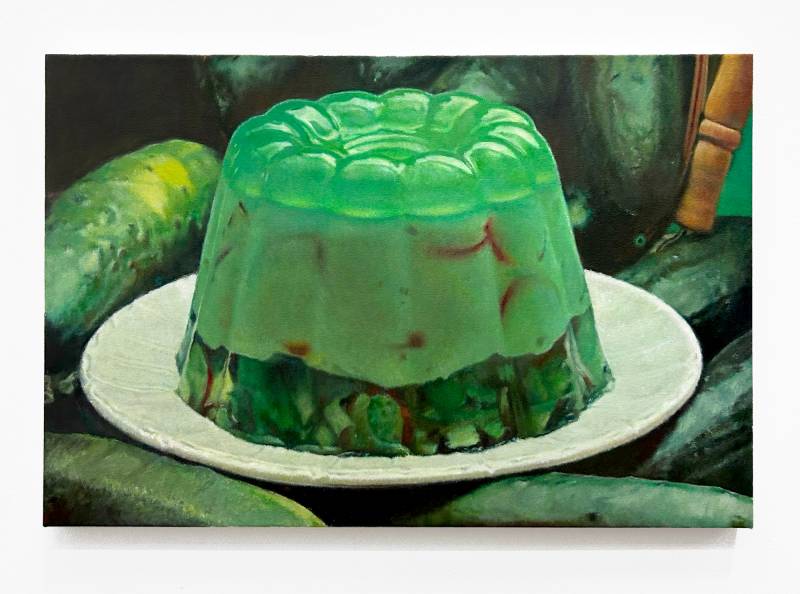It felt appropriate to visit a show titled Call of the Void during an unrelenting heat wave. A deep, dark, cool nothingness was all my reptile brain desired as I walked down an unshaded stretch of Market Street.
While there wasn’t any physical relief inside 1599fdT (now relocated from Chinatown to 1912 Market Street), at least there was a kind of mental escape in the form of Laura Rokas and Erik Bender’s lime-hued show. This has been an important year for a certain slimy shade, but Rokas and Bender’s take on the color is less brat, more lime Jell-O, with flashes of green-as-otherworldly threat from 1979’s Alien.
Their work is a study in contrasts, and yet both artists exhibit an eye-catching attention to their surfaces. Rokas’ paintings on canvas, linen and paper employ an almost photorealist approach to found images. Bender is the abstractionist of the pair, with dark, very vertical paintings ruptured by organic slices of green.

As is often the case with art first seen on a screen, I was completely thrown by the scale of the work in Call of the Void. Some of Rokas’ framed paintings on paper are jewel-like: small, concentrated renderings of a dated Jell-O dish and a woman bent backward, exposing her throat. They’re eerie, compelling in their beautifully rendered detail, but their size somewhat conceals their power. By contrast, there’s no missing the impact of Coup de Fouet (“whiplash” in French), a portrait of a leather-clad dominatrix from the haughty lips down.
Fittingly, this 36-by-32-inch painting exerts an assured dominance over the show, even opposite Bender’s six-foot-tall stunner Soulbreaker. Rendered in cool gray-blues that capture the sheen of the figure’s jacket, Coup de Fouet is held taut by the curve of a switch. Such tension characterizes Rokas’ work throughout: a freeze frame of a cyclist’s padded rear end; a sleek bike brake waiting to be squeezed; a Jell-O dish sure to quiver as soon as it’s set upon the table.

Bender’s acrylic and oil paintings on canvas (and sometimes carved plaster) trade detail for layers and textures. Where Rokas’ greens seem to come from the oversaturated ink of ’70s printed matter, Bender uses the hue as a sickly warning color — too toxic to signal anything but “beware.” With loose brushwork, he conjures green plant shapes out of dark backgrounds, or gestures delicately at the fine filaments of a twisting, portal-like spiderweb.


